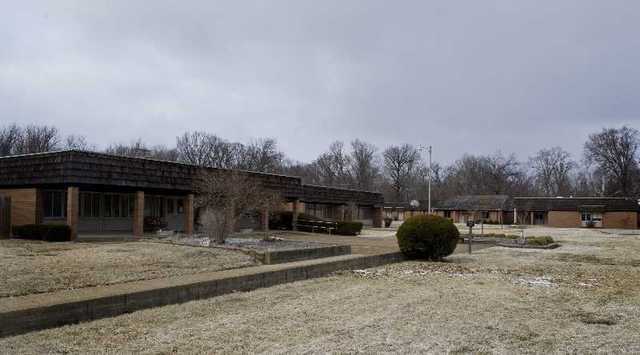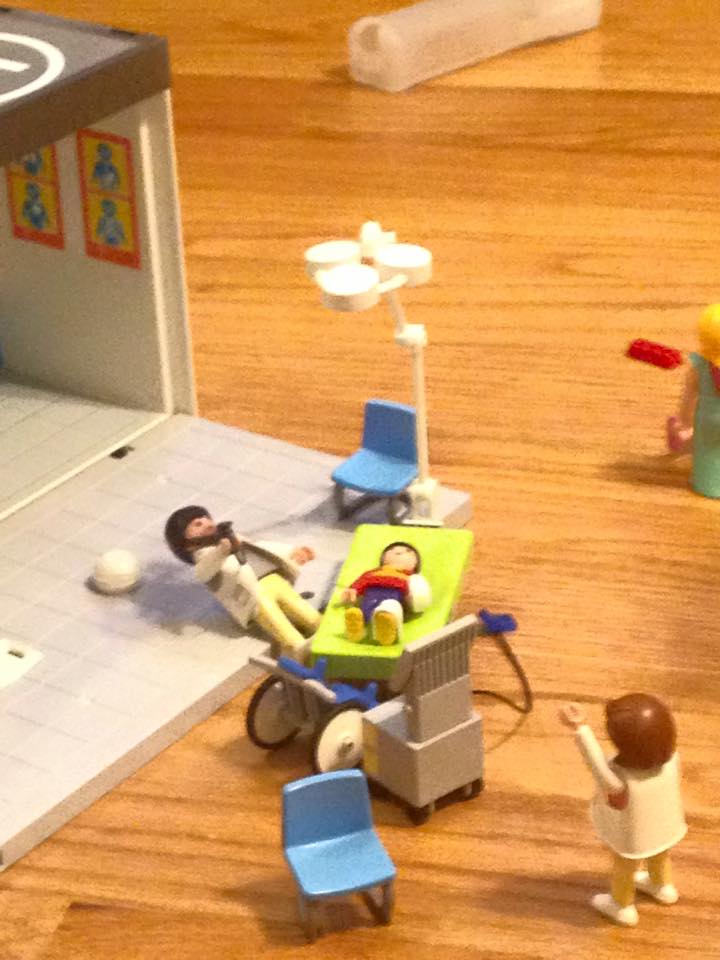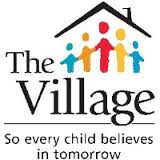I was born and raised in a small town in Northwest GA called Dalton. Dalton is known as the "carpet capital of the world," because, well, we make a LOT of carpet. At one point ~96% of carpets in the US were manufactured in Dalton or by a Dalton-based company. Largely due to the influence of the carpet industry, Dalton became a great place for jobs  during recent decades, and, as such, Dalton attracted numerous immigrants, mostly from Mexico and other Central America. In recent censes, Dalton has consistently maintained a majority Hispanic population (46.7% in 2013), followed closely by 42.3% White (non-Hispanic), and then 7.4% Black. Though as a whole things have improved, and though Dalton is by no means a bad place, one unfortunate result of the influx of non-white immigrants into my hometown was that the previous hegemony held by some of the White majority experienced a perceived threat to their well-being, and racial tensions began to develop. Thus, as I grew older during my time in Dalton (0-18 years old), I became increasingly aware of the overt and covert racism that was all too commonplace amongst some (but certainly not all) of the people in my hometown. The culmination of this mixture of overt and covert racism was exemplified recently in a national news story featuring some members of my home community who conducted a "parade" of sorts driving their trucks through town flying the Confederate flag. Most of the people who participated in this parade, in my view, were focused on making a statement of "heritage, not hate," and they hoped to call attention to the positive importance of the Confederate flag to communities from the Deep South; however, one of the unfortunate consequences of these activities was that, instead, it called attention to the relative lack of understanding that many people, including many of those who come from my very own hometown, still have about minority issues and social justice.
during recent decades, and, as such, Dalton attracted numerous immigrants, mostly from Mexico and other Central America. In recent censes, Dalton has consistently maintained a majority Hispanic population (46.7% in 2013), followed closely by 42.3% White (non-Hispanic), and then 7.4% Black. Though as a whole things have improved, and though Dalton is by no means a bad place, one unfortunate result of the influx of non-white immigrants into my hometown was that the previous hegemony held by some of the White majority experienced a perceived threat to their well-being, and racial tensions began to develop. Thus, as I grew older during my time in Dalton (0-18 years old), I became increasingly aware of the overt and covert racism that was all too commonplace amongst some (but certainly not all) of the people in my hometown. The culmination of this mixture of overt and covert racism was exemplified recently in a national news story featuring some members of my home community who conducted a "parade" of sorts driving their trucks through town flying the Confederate flag. Most of the people who participated in this parade, in my view, were focused on making a statement of "heritage, not hate," and they hoped to call attention to the positive importance of the Confederate flag to communities from the Deep South; however, one of the unfortunate consequences of these activities was that, instead, it called attention to the relative lack of understanding that many people, including many of those who come from my very own hometown, still have about minority issues and social justice.
The reason I share all of the above is to draw a picture about one of the reasons I ended up in psychology. I learned from an early age that social injustice is real. I saw, throughout my life, social segregation of the non-white race from the White hegemony, and I came to feel that something just wasn't right about this. I thus found myself developing quickly into an advocate of social justice. As I continued to develop through high school, college, and even through graduate school, I developed a heightened awareness of other kinds of social injustices, not just limited to race, but also including socio-economic status, religion, ability (vs. disability), and other forms of privilege. I think it is this awareness of social injustice that led me, although indirectly, and discretely, to pursue psychology in college and graduate school.
I knew early on I wanted to be a therapist. In a similar way as described above, I was fortunate to have an innate gift for empathy, which I further developed through some of the experiences described above, combined with lessons learned from my family, friends, and mentors. This capacity for empathy made me feel early that the best career for me would be one in which I could engage in psychotherapy with others, getting to know them deeply, learning from them, and, with good fortune, helping them enjoy life to the greatest extent possible.  I ended up going to college at the University of Evansville, in Evansville, IN, which is a small, private, liberal arts college smack dab in the middle of the Midwest. I loved every minute of it. I was blessed with a wonderful education, met the love of my life, and continued to grow in my exposure to multiculturalism, as I worked closely with international students throughout my time there. While in college, I landed an internship, and then a job, working first as recreational therapy intern, and then as a psychiatric attendant at a small, approximately 30-40 bed state children's hospital, called the Evansville Psychiatric Children's Center (EPCC). EPCC housed children ages 6-14 years, both male and female, in two, locked units. The children who ended up at EPCC had serious mental illnesses, but, more importantly, all of them had experienced some level of very serious physical, sexual, and/or emotional trauma in their young lives. I learned quickly, in fact, that it was due to these traumas that these children had the symptoms they had, and it was because of these traumas (most often given to them by a parent or other supposedly loving family member) that these children built internal safety barriers to protect themselves from further abuse. In other words, they behaved in ways that made them hard to like, because, to them, being loved meant being hurt! Nonetheless, the more time I spent with these kids, the more I liked them, and I found that my personality was well-suited for making connections with these children who seemed to work so hard to push everyone close to them away. In the end, I made very close connections with these children - I lived with them for 8 hours a day, and some for over a year (typical hospital stay there was 6 months, though some stayed for 12-18). I knew from those experiences that I wanted to continue this work, to connect with traumatized children and to help children overcome mental illness and other adversity.
I ended up going to college at the University of Evansville, in Evansville, IN, which is a small, private, liberal arts college smack dab in the middle of the Midwest. I loved every minute of it. I was blessed with a wonderful education, met the love of my life, and continued to grow in my exposure to multiculturalism, as I worked closely with international students throughout my time there. While in college, I landed an internship, and then a job, working first as recreational therapy intern, and then as a psychiatric attendant at a small, approximately 30-40 bed state children's hospital, called the Evansville Psychiatric Children's Center (EPCC). EPCC housed children ages 6-14 years, both male and female, in two, locked units. The children who ended up at EPCC had serious mental illnesses, but, more importantly, all of them had experienced some level of very serious physical, sexual, and/or emotional trauma in their young lives. I learned quickly, in fact, that it was due to these traumas that these children had the symptoms they had, and it was because of these traumas (most often given to them by a parent or other supposedly loving family member) that these children built internal safety barriers to protect themselves from further abuse. In other words, they behaved in ways that made them hard to like, because, to them, being loved meant being hurt! Nonetheless, the more time I spent with these kids, the more I liked them, and I found that my personality was well-suited for making connections with these children who seemed to work so hard to push everyone close to them away. In the end, I made very close connections with these children - I lived with them for 8 hours a day, and some for over a year (typical hospital stay there was 6 months, though some stayed for 12-18). I knew from those experiences that I wanted to continue this work, to connect with traumatized children and to help children overcome mental illness and other adversity.

Evansville Psychiatric Children's Center. Building in left of image is Administrative building and school. While building at right is dormitory.
I applied to graduate school with this singular goal in mind, and I was offered the opportunity to study under Helen Benedict, Ph.D. at Baylor University in Waco, TX. Dr. Benedict (now retired) was a nationally renowned expert in childhood trauma and play therapy. She wrote the book chapter on "Object-relations play therapy," which focused on a model of care she developed specifically for treating the often very difficulty manifestations of chronic, complex trauma in young children. Under Dr. Benedict, I learned even more about treating and connecting traumatized children, and I learned about play therapy and all of the richness that play therapy could offer. I also learned about other treatment approaches - evidence-based treatment approaches - and was fortunate that Baylor offered me a varied exposure to numerous theoretical orientations. I found myself intrigued by the integration of these various theories and orientations into effective therapy. The more I learned about EBPs (evidence based psychotherapies) the more I loved the science that they added to the field, but also the more I grew disillusioned with their non-integrative approach. I found myself feeling that EBPs and manualized therapies, though they had much to offer to the field, fell short of the richness of the art of psychotherapy, which involves a complex process of making connections with clients, evaluating needs, and adapting treatment to fit the needs of any given client. So, as a graduate student, I began to develop, in my mind, an alternative approach to the manualization of psychotherapy, where scientific principles were still followed, in order to lead to better evidence-based practice, but where the "art" of psychotherapy could still be adequately integrated into evidence-based practice. I also found myself disillusioned with the finding that too many children seemed to "drop out" of manualized treatment approaches when applied in the community. Logically, I thought that one reason for this must be that children don't seem to find the process of psychotherapy to be very much fun. And, generally speaking, successful psychotherapy isn't fun. It's work! Hard work! However, I felt like this perhaps did not necessarily need to be the case, and I thought that perhaps psychotherapy, if not fun, could at least be "palatable." Researchers and clinicians often talk about "tolerability" of treatment, but I believe that treatment is likely to work best when it is more than just tolerable, but also palatable. They don't make children's cough syrup taste really good for no reason - it's because kids are more likely to take it if the taste is palatable. The same principle should apply to psychotherapy. Hence, I became interested in increasing palatability by working to figure out how to incorporate the things that kids enjoy, and already do everyday, into the psychotherapeutic enterprise.
Dr. Benedict (now retired) was a nationally renowned expert in childhood trauma and play therapy. She wrote the book chapter on "Object-relations play therapy," which focused on a model of care she developed specifically for treating the often very difficulty manifestations of chronic, complex trauma in young children. Under Dr. Benedict, I learned even more about treating and connecting traumatized children, and I learned about play therapy and all of the richness that play therapy could offer. I also learned about other treatment approaches - evidence-based treatment approaches - and was fortunate that Baylor offered me a varied exposure to numerous theoretical orientations. I found myself intrigued by the integration of these various theories and orientations into effective therapy. The more I learned about EBPs (evidence based psychotherapies) the more I loved the science that they added to the field, but also the more I grew disillusioned with their non-integrative approach. I found myself feeling that EBPs and manualized therapies, though they had much to offer to the field, fell short of the richness of the art of psychotherapy, which involves a complex process of making connections with clients, evaluating needs, and adapting treatment to fit the needs of any given client. So, as a graduate student, I began to develop, in my mind, an alternative approach to the manualization of psychotherapy, where scientific principles were still followed, in order to lead to better evidence-based practice, but where the "art" of psychotherapy could still be adequately integrated into evidence-based practice. I also found myself disillusioned with the finding that too many children seemed to "drop out" of manualized treatment approaches when applied in the community. Logically, I thought that one reason for this must be that children don't seem to find the process of psychotherapy to be very much fun. And, generally speaking, successful psychotherapy isn't fun. It's work! Hard work! However, I felt like this perhaps did not necessarily need to be the case, and I thought that perhaps psychotherapy, if not fun, could at least be "palatable." Researchers and clinicians often talk about "tolerability" of treatment, but I believe that treatment is likely to work best when it is more than just tolerable, but also palatable. They don't make children's cough syrup taste really good for no reason - it's because kids are more likely to take it if the taste is palatable. The same principle should apply to psychotherapy. Hence, I became interested in increasing palatability by working to figure out how to incorporate the things that kids enjoy, and already do everyday, into the psychotherapeutic enterprise.
The model that I eventually came up with ended up (somewhat serendipitously) with a very "buzz-friendly" name - Fantasy-Exposure Life-Narrative Therapy (FELT). FELT became the culmination of all the experiences and interests I just described above. The idea was to develop a model of psychotherapy that could 1) be studied scientifically, 2) be applied widely to a large range of disorders and presentations, 3) tell therapists what characteristics, exactly, most facilitated therapeutic connection and therapeutic change, 4) inform therapists how to adapt their therapeutic approach based on the individualized needs of the client (which could include culture, SES, religion, ability, etc.), and 5) identify (and utilize) what types of play are both palatable to kids and therapeutic at the same time. I have since tested this model in a number of pilot studies, and the results have been extremely promising. Although the full FELT paradigm is too complex to summarize here, the images below demonstrate some of the concepts that can be communicated through play therapy.


Nurturing play can be very important. In the left image, my daughter is playing doctor, and I'm the patient. Through this play, the therapist may highlight that sometimes nurturance can hurt (e.g. shots, parents setting limits, etc.), but the long-term benefits outweigh short-lived pain. The therapist can also demonstrate how to tolerate pain or other unpleasant feelings through active coping (e.g. breathing techniques, singing a favorite song, etc.). In the right image, doctor play is achieved through toy characters. In this case, an anxious child is preparing for a medical procedure. In this scene, the doctor became so overwhelmed by the procedure that he fainted. For this child, the scene was an attempt to process her fear that the doctors would fail in healing her during the procedure. She alleviated this fear by having another doctor (bottom right of image) provide support to the main doctor to keep him from getting overwhelmed. The scene ended after the female doctor helped the male doctor and they both completed the procedure to success. In both cases, children can use play to process normal and/or frightening experiences, and therapists can model proper coping through play.
At ETSU, my goal as a teacher and researcher is to build this therapeutic model and to disseminate it widely for use by practicing psychotherapists. I also seek to recruit and train students in thinking about psychology, and in particular, clinical psychology, in similar ways. I do not want to produce mini copies of me. I want to develop scholars who care about social justice, who seek to correct problems in the modern world, who want to maximize the potential of people, especially children, who want to discover the complexities of the "art" of successful psychotherapy (and who understand science enough to be able to add to the evidence base), and who, perhaps most of all, want to not only have fun themselves, but to find ways for others to have fun as well.
Prior to coming to ETSU, I completed my pre-doctoral internship in clinical child psychology at an APA-accredited internship in Hartford, CT called The Village for Families and Children, Inc.  This internship was the perfect match for me! The Village is a social services organization that is over 200 years old (founded in 1809) and has been providing social services to children and family in the Hartford community throughout that time. Once an orphanage, with little "cottages" as homes (hence, "The Village"), the agency has grown into a hub of wrap-around services specializing in trauma and addressing the needs of families living in extreme urban poverty, and I am very proud to have worked and been trained there. I worked with 100s of kids there between the ages of 3-19, and treated the full spectrum of mental illnesses, from extreme, complex trauma (the most common presentation), to clean, standard anxiety or depression, to psychosis, to bipolar disorder, and everything in between. My training there only further solidified my approach described above, and gave me an ever-changing view on the issues of multiculturalism in clinical practice, as I received focused supervision on such issues.
This internship was the perfect match for me! The Village is a social services organization that is over 200 years old (founded in 1809) and has been providing social services to children and family in the Hartford community throughout that time. Once an orphanage, with little "cottages" as homes (hence, "The Village"), the agency has grown into a hub of wrap-around services specializing in trauma and addressing the needs of families living in extreme urban poverty, and I am very proud to have worked and been trained there. I worked with 100s of kids there between the ages of 3-19, and treated the full spectrum of mental illnesses, from extreme, complex trauma (the most common presentation), to clean, standard anxiety or depression, to psychosis, to bipolar disorder, and everything in between. My training there only further solidified my approach described above, and gave me an ever-changing view on the issues of multiculturalism in clinical practice, as I received focused supervision on such issues.
Following internship, I completed post-doctoral training at Community Health Center, Inc., the largest community health center in the state of CT. My post-doc was in community health and integrated primary care, and I worked in two health clinics in New London and Clinton, CT, as well as in a school-based health center at Middletown High School in Middletown, CT. I worked closely alongside physicians, dentists, nurse practitioners, and other allied health professionals in an integrated model. I would classify most of CHC as functioning at a low level 5 integration according to the Doherty, McDaniel, and Baird (1996) model. This served as a wonderful adjunct to my training about incorporating all of my above-described ideas into an integrated, medically-oriented setting, which, I believe, represents a MAJOR future in the field of clinical psychology.
